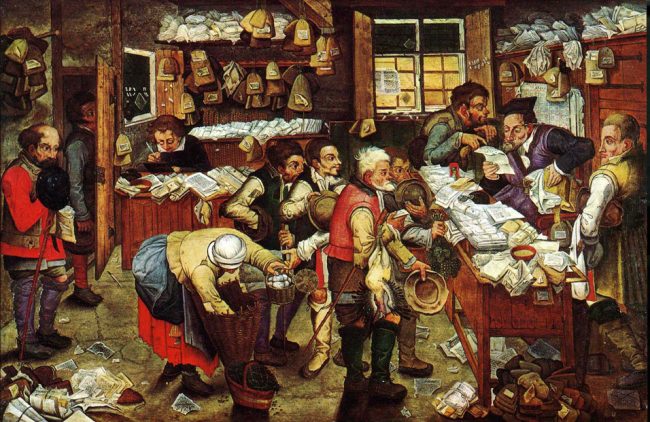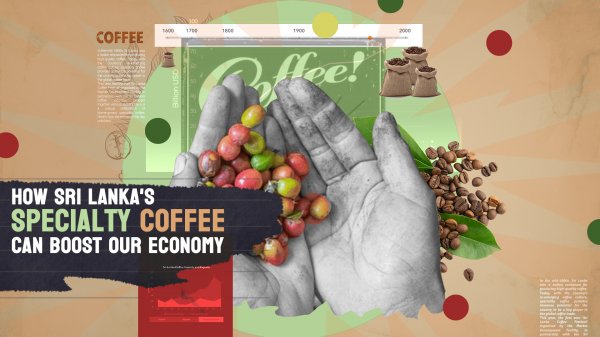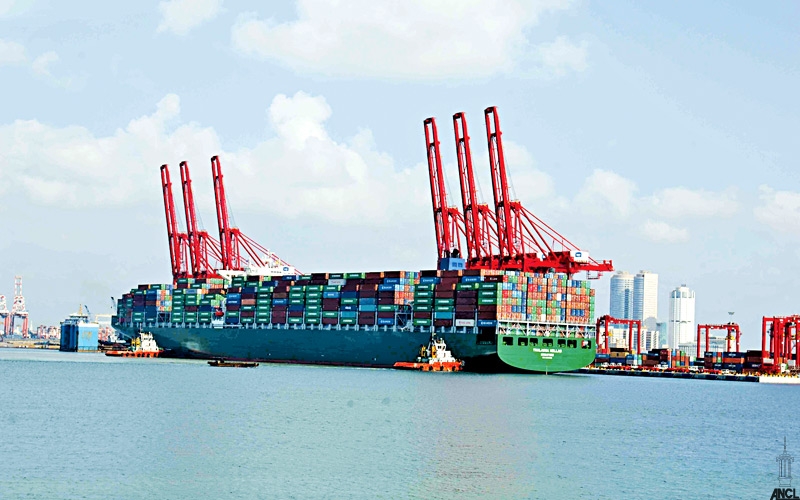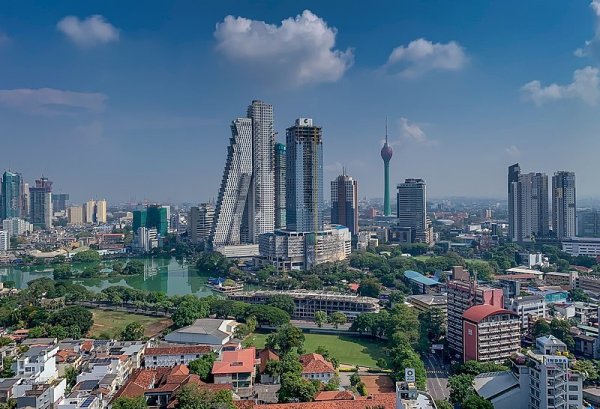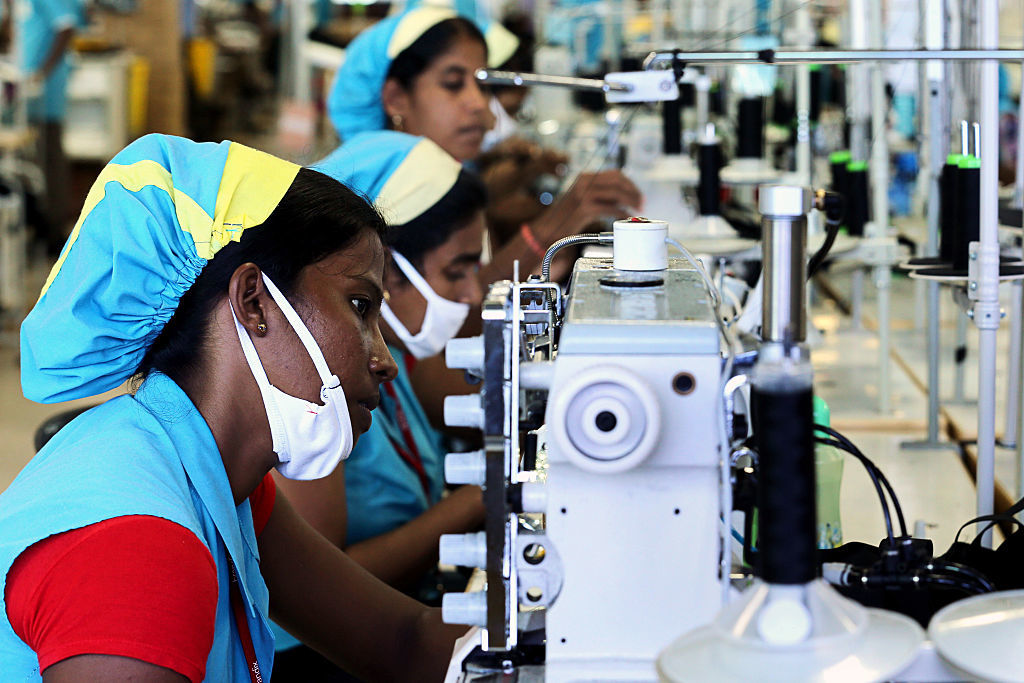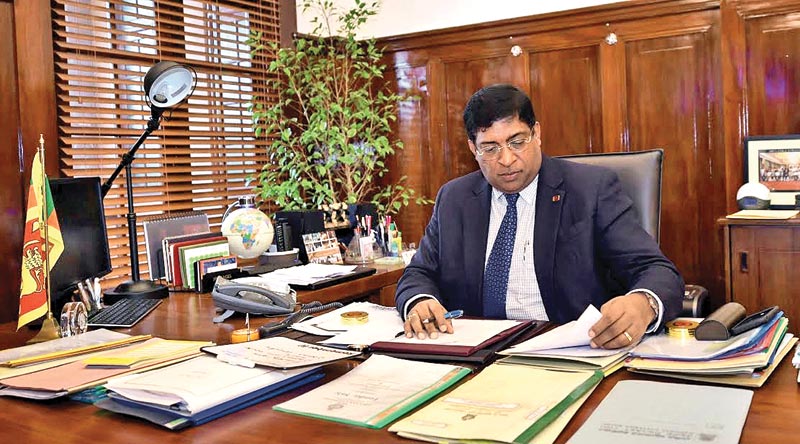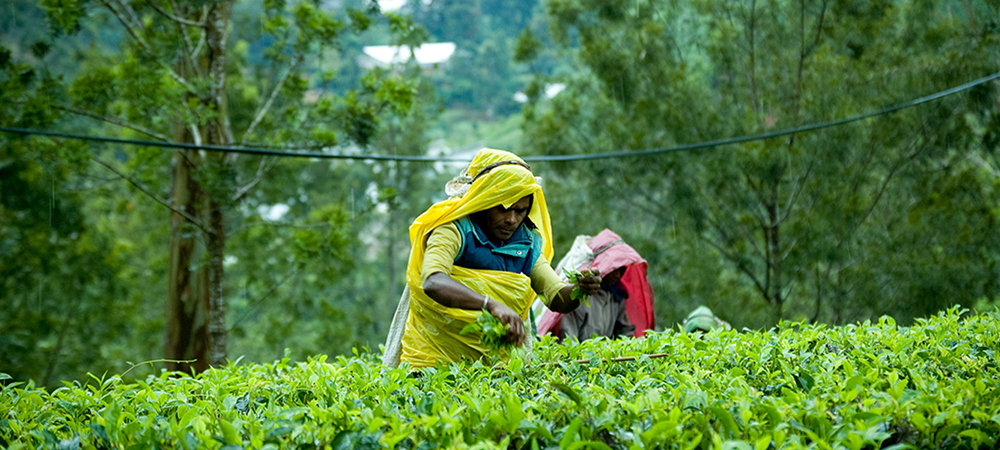
In September 2016, export prices for Ceylon Tea peaked, and total exports were 3% higher than the previous September. However, all was not well for Sri Lanka’s tea sector: according to brokers, it was failing to keep its share of the most important overseas markets for black tea – with the important exception of China.
There are reasons to believe this is not a minor glitch, but a continuous decline in Sri Lanka’s strategic tea exports. One reason was the downturn in the economies of key black tea-consuming countries – those dependent on petroleum exports, such as Russia (the biggest market for Ceylon Tea) and the Middle East – which account for three-quarters of the country’s tea exports.
However, exports also weakened in other markets, indicating an underlying malaise. While many experts have faulted the Tea Board for inadequate product promotion, this is only partly responsible for the decline.

Tea shelf at Australian supermarket. Image courtesy reddit.com
The Cost Of Plucking
A major factor which is often highlighted is the high cost of production due to high wages: Sri Lankan plantation workers are paid up to twice as much as those in India or Kenya. This has caused market-oriented economists to recommend the abandonment of tea cultivation in favour of other crops.
This is, to put it mildly, unwise and short-sighted. Tea is the most widely consumed beverage, in the world, after water. Researchers in developed countries find that the amount of space supermarkets devoted to tea has increased dramatically, especially for ready-to-drink beverages. The global tea market is expected to expand at 2.8 % annually over the next five years.
Sri Lanka has considerable expertise and know-how in tea, and the country still has a significant market share, as well as a brand renowned for quality, all assets which are not easily acquired, and which could be lost irrevocably if tea were abandoned.
Other countries with higher labour costs have not stopped growing tea. They have developed their productivity and cut production costs. In Kenya, tea plantations are mechanised, unlike Sri Lankan tea estates, where wages account for 80% of tea industry inputs. While labour-intensive production can be an advantage in marketing high-quality and boutique teas, it reduces competitiveness in the important mass market.
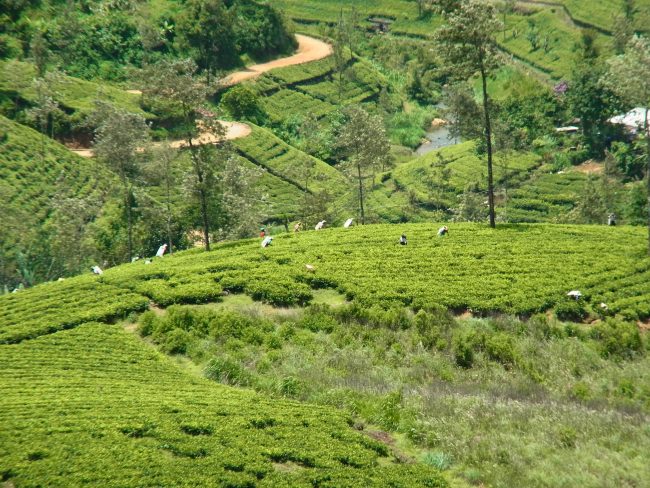
Tea plucking, Kotagala. Image courtesy writer
The Bitterness Of Coffee
The labour-intensity of Sri Lankan estates has roots in the history of the plantation system of Sri Lanka, which goes back to the late 1830s, when coffee was first grown as a plantation-scale crop. This came about because England’s industrial revolution created a middle class which adopted coffee as its beverage of choice.
The Overland Ceylon Observer and Monthly Précis of Ceylon Intelligence reported on 15 November 1847 that coffee consumption in Britain rose from 300 tons (tonnes) in 1801 to 15,000 tons in 1846. There was a large and rapidly-growing market for the “bitter bean”, with enormous potential for Sri Lanka, especially after the abolition of slavery in British possessions in 1833, which made West Indian plantations less competitive.
Sri Lankans had grown coffee for some time, in their home gardens – this was known as “native coffee”. However, it was not, traditionally, grown on a large scale, and there was little experience of plantation-scale coffee management. The first successful experimental coffee plantation was established in the 1820s, by George Bird, who was granted 80 hectares of land and a tax-free loan of 4,000 Rix Dollars by the colonial government.
Most planters had never been in the tropics before, most being fresh from Scotland – according to one source, 95% of estate superintendents were Scots, half of them from Aberdeen and its hinterland; most recruited through informal networks. It was all very hit-and-miss.
Then, in 1837, yet another Scot, Robert Boyd Tytler, who had experience of planting in Jamaica, was employed by the firm of Ackland, Boyd & Co. in developing their coffee estates. According to John Ferguson, in Ceylon in the Jubilee year, Tytler was “usually regarded as the ‘father’ of Ceylon planters”, having introduced “the West India system of cultivation”. A second-hand copy of Pierre-Joseph Laborie’s The Coffee Planter of St Domingo, which he brought with him, became the coffee planters’ Bible. This obscure book – based on Laborie’s experience of the slave-labour methods of coffee cultivation used in Haiti – was to be the foundation of Sri Lanka’s estate system.
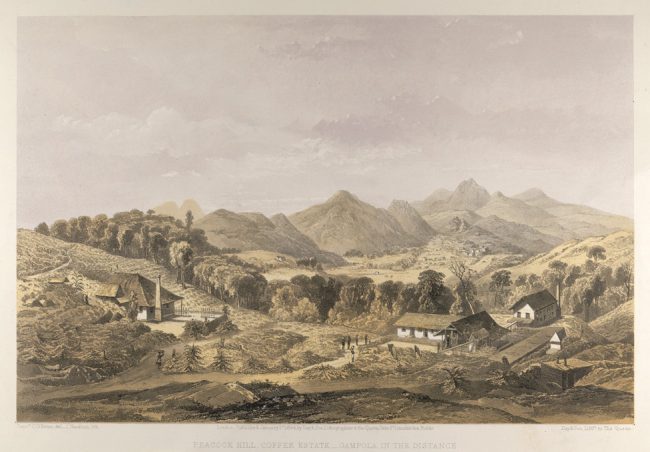
Peacock Hill coffee estate, Pussellawa. Image courtesy British Library
“Mr Kankani, where is our pay?”
Coffee did not require a fixed labour force. Coffee planters employed local labour, especially for back-breaking work such as clearing and planting. However, for the mundane tasks of fertilising, pruning, and harvesting, itinerant Indian Tamil labour was used. Since work was seasonal, most workers returned home to South India at the end of the harvest.
This gave several planters the opportunity to cheat the workers out of their wages. A Tamil folk song from that time was recorded in 1975 by Valentine Daniel, which seems to indicate that the labourers were being cheated out of their wages by senior civil servants who had taken up large tracts of land for coffee estates.
One such planter, Captain William Fisher (whose son, Admiral Jack Fisher, became First Sea Lord), wrote in The Ceylon Overland Observer of 10 July 1847, boasting how he had played out the labourers he hired to work on Wavendon Estate, Ramboda, hiring new ones in their stead.
It was probably this behaviour which made migrant labour scarce, causing the planters to recruit directly from South India. They used ‘Kanganies’, or labour overseers, to hire labour – most of it consisting of indentured labourers, who had to work until they paid off their debt. As the song recorded by Valentine Daniel says:
“Mr Kankani, Mr Kankani, where is our pay?
O karmam, o karmam, the first half the bugs ate,
The second is paying up the interest you owe.”
This “Kangany System” became firmly established after tea became the major crop, following the coffee blight. Tea requires year-round tending and plucking, so a fixed labour force was vital.
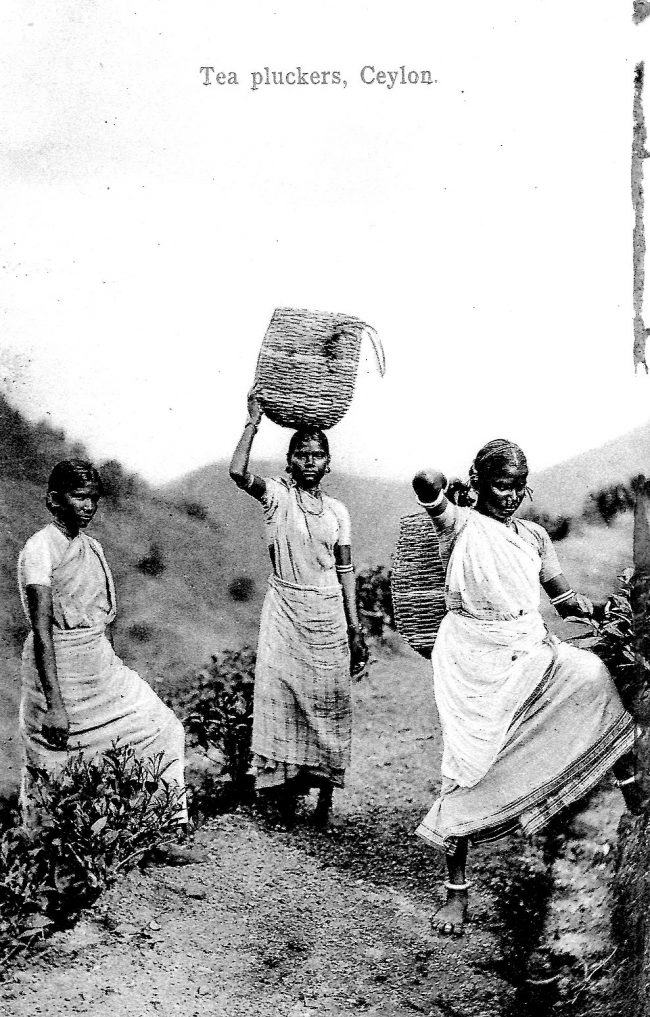
Tea pluckers in the 1880s. Image courtesy Cambridge University Library
Plantation Conservatism
A fixed labour force also meant that more permanent arrangements had to be made for housing them and looking after them. The large capital outlay on these items discouraged further investment in technological advancement and mechanisation. Indeed, the empirical evidence pointed to the system itself being the cause of technological stagnation.
Former deputy head of the Hector Kobbekaduwa Agrarian Research and Technology Institute, S.B.D. de Silva, in his The Political Economy of Underdevelopment, showed that this system was inherently backward – merely a re-organisation of production to take advantage of economies of scale rather than a transformation based on technology. This conservatism he contrasted with the dynamism of industrial capitalism: based on mechanisation, intrinsically open to technology and amenable to change.
He also found that Sri Lanka’s tea sector was even more averse to change than those of India or Kenya. For example, the pace of adopting CTC (cut-tear and curl method of tea manufacture) teas, which are more suitable for tea bags, was much slower here. The magnitude of this conservatism is indicated by the fact that S.J. Wright, consultant on engineering to Britain’s Royal Agricultural Society, recommended in 1953 that future replanting be done in rows rather than clumps, in order to facilitate mechanisation of tea planting, weeding, and plucking, but this was not acted upon.
Of course, very little replanting took place at all: to further confound the situation, in the post-independence era, investment in the estate sector all but ceased and replanting was not carried out. Both Sri Lanka’s and India’s tea sectors were affected by dis-investment to East Africa by foreign owners. New investments were not forthcoming.
As a result of the lack of replanting, which requires considerable investment, a decline in tea productivity took place, from a peak in the late 1950s – then the highest in the world. A tea bush has a productive life of 35-40 years, after which it needs to be uprooted and a new plant put in its place. Since this was not done, a steady deterioration in productivity could be the only result.
Who Will Replant?
In the 1970s, the nationalisation of estates took place. Some of the old tea areas, uneconomical due to their eroded or otherwise degraded condition, were turned over to different crops or to land settlement. In order to regenerate the tea estates, the state-owned plantations undertook a programme of replanting 4% of the area under tea every year – with complete regeneration being the expected result by 2000.
However, in 1992, most plantations were handed over to Regional Plantation Companies (RPCs), which did not replant on anything near this scale. “Who’s going to spend Rs. 1 million on replanting tea or rubber,” said one expert in 2005, “only to expect a return in 15 years?”
The failure of the RPCs to invest in their own estates was acknowledged by the Minister of Finance in his 2017 budget speech, in which he said that “at the end of almost 25 years, we observe that the performance has been erratic, with investments in modern equipment and agricultural practices in RPCs being inadequate, with misuse of the assets and hence productivity remaining to be a worrisome issue.”
Consequently, the estate sector has been contributing progressively less towards tea production: more than half is now produced by smallholders, who depend on family labour and on state-subsidised purchases.
The Need For Machines
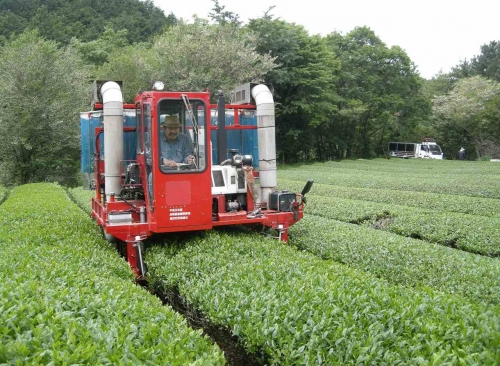
Japan has mechanised tea harvesting. Image courtesy Postcard Teas
Modern management techniques have not penetrated the estates. Innovations are slow to be introduced. Several devices have been invented for increasing labour productivity, but they have not been implemented by RPCs. However, productivity-increasing innovations are vital for the survival of the tea industry.
Countries such as Georgia, Japan, and Argentina have completely mechanised tea production, including plucking. Even India, where labour costs are a much lower proportion of cost of production of tea than in Sri Lanka, has inaugurated a programme of mechanisation.
CTC teas, which are used in tea bags, do not require such high quality as ordinary teas, and are more amenable to mechanisation of plucking. Repeated use of mechanical harvesters also has the effect of ensuring that new shoots emerge at the same level. A 1998 South Indian study found that, over time, the application of mechanical shearing actually improved tea quality over hand-plucked tea, for CTC teas.
The disadvantage is that it is difficult to use mechanical pluckers on steep slopes. Experts point out that the terrain on which tea is planted is not conducive to mechanisation. This factor was considered by S.J. Wright in his 1953 study. He pointed out that contour planting would eventually minimise this factor, and that with replanting optimised for mechanisation, the cost of production could be reduced by 50%.

Two-person hand-held harvester. Image courtesy Teachai
For mechanisation to take place, there has to be a gradual overhaul of the workforce. Executives need to be drawn increasingly from among agronomy graduates and diploma-holders. Workers would also need to be retrained and re-educated, and attractions must be provided to prevent the drain of labour away from the estates. At the same time, alternative employment must be found for the workers made redundant by mechanisation. This might be accomplished by moving value-adding industry to the estate areas – especially in the rapidly-expanding area of ready-to-drink teas.
Of course, this would not take place overnight – replanting and mechanising could take up to a quarter-century to accomplish. However, for all this to take place, there has to be fundamental re-structuring of the tea industry on modern capitalist lines – which means creating a propensity for investment and innovation. The old colonial ways will no longer do.
Featured image credit: Vanmeerbeeck Frédéric
